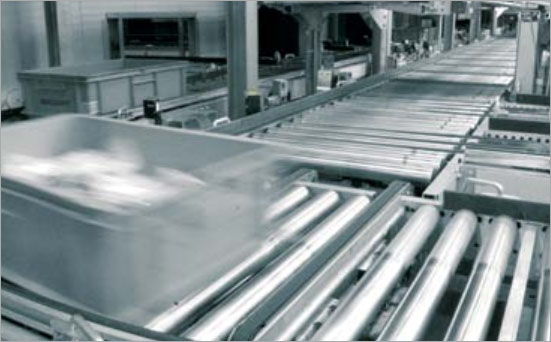With the recent widespread adoption of RFID technology in manufacturing plants I have encountered quite a number of customers who feel like they have been “trapped” by the technology.
The most common issue is their current system cannot handle the increase in the requirements of the production line. In a nutshell, their system isn’t scalable.

Dealing with these issues after the fact is a nightmare that no plant manager wants to be a part of. Can you imagine installing an entire data collection system then having to remove it and replace it with a more capable system in 3 years or even less? It’s actually a pretty common problem in the world of technology. However an RFID system should be viable for much longer if a few simple questions can be answered up front.
-
Is decreasing production time an objective of your organization?
-
I assume the answer to this is yes in most cases. Decreasing production time means an increase in line speed which means the RFID system has to be able to read and write faster. Some RFID systems are designed for reading a tag while the part is static or sitting in front of the reader for a period of time, while others are designed for reading a tag dynamically as it flies by the read head. Taking the time to determine if a system is capable of reading on the fly is worth the extra research time to avoid the “trap”.
-
Will you use more data in the future than you do today?
-
Basically, will you need to write more data to the tag as the line matures? That seems like another no-brainer considering the huge demand for data storage in other realms of our life. Countless times I have heard customers say all they want to write to the tag is a four digit identifier and a year later they want to add quality information, lineage data, build data, process data and so on to the tag. Couple that with an increase in line speed and now you are talking about some serious throughput. It is imperative to make sure the tag has the necessary capacity and the reader has the necessary cycle time to handle the increase in demand for throughput.
-
Will you ever expand the line to have more read/write stations?
-
This is a big one especially in quality intensive applications where multiple inspections throughout the process are required. The critical error here is lack of foresight into the networking capabilities of the system. Whether the processor is capable of handling multiple readers or it is just a single read point solution it is important to know how the system is expanded. Some systems are expanded by daisy chaining processors which is less complicated than adding additional switching equipment to expand the system.
None of us are capable of telling the future, but we can put a pretty good plan together to accommodate growth. Keep it simple and ask as many questions as you can dream up before you pull the trigger. Just make sure the three questions above are addressed and the technology trap can be avoided.
To learn more about RFID solutions visit www.balluff.com.
























